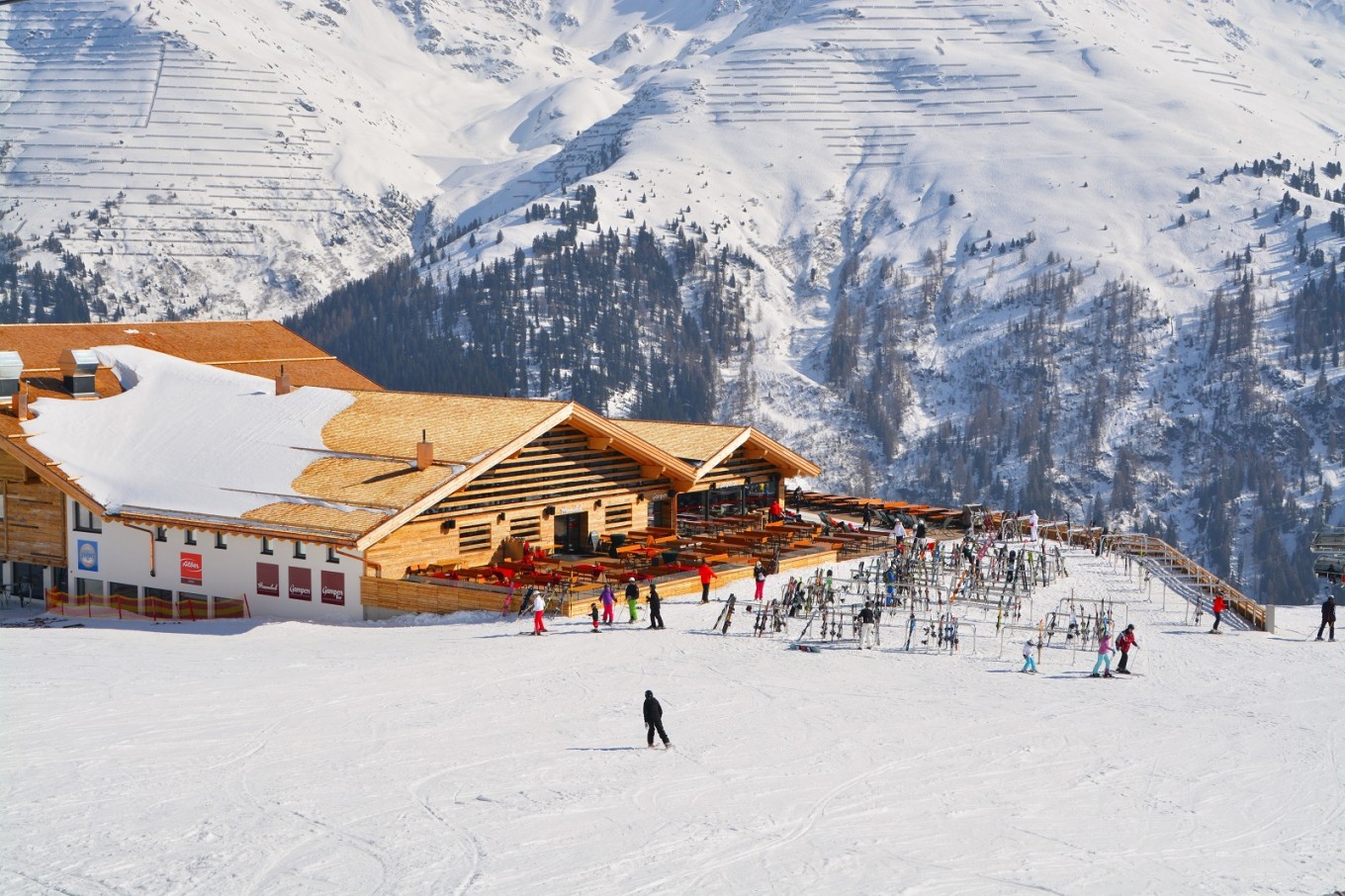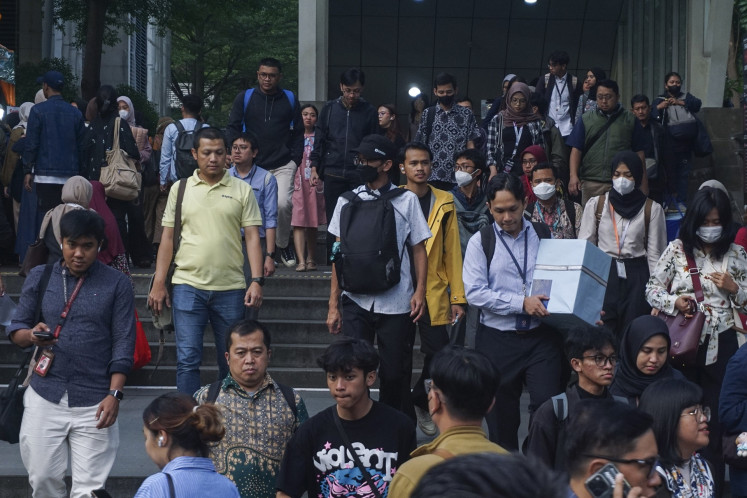Popular Reads
Top Results
Can't find what you're looking for?
View all search resultsPopular Reads
Top Results
Can't find what you're looking for?
View all search resultsAustria's Arlberg megaresort gets more mega with new connections
It’s a cold, brilliantly sunny day at the top of St. Anton am Arlberg.
Change text size
Gift Premium Articles
to Anyone
I
t’s a cold, brilliantly sunny day at the top of St. Anton am Arlberg, the resort known for high-Alpine descents and late-night partying that straddles the Arlberg Pass in western Austria. The craggy peaks spilling away for miles in every direction are just as impressive as they were when I first visited the vast area two decades ago.
Maybe even more so. The last time I was here, skiers and boarders generally stayed in a single area for the day. St. Anton’s neighboring town of Zürs was tantalizingly close—and even shared a lift ticket. But getting there from the Valluga, the 9,200-foot mountain that’s the starting point for the longest run in the area, required a descent into the tiny settlement of Alpe Rauz before taking a bus over the pass, a cumbersome way to move from town to town and a powerful disincentive to doing it more than once in a week’s vacation.
Today, a gondola links the two villages. In just over five minutes, it whisks us up the Trittkopf mountain and deposits us at the slopes above Zürs. Additional improvements made over the past four seasons include a chairlift connecting Lech and Warth, as well as new gondolas in Zürs and Stuben. Taken together, they’ve transformed the Arlberg region, already one of Europe’s greatest thrills, from a bunch of adjacent towns into one chart-topping mega-resort.
With 200 miles of slopes, 88 lifts, and cable cars linking well over 120 trails—not counting a further 100 miles or so of off-piste terrain—the Arlberg region is Austria’s largest ski domain. Though it’s only half the size of the world’s largest ski area (that would be France’s Trois Vallées), it’s still 20 percent bigger than U.S. giants such as Big Sky, Mont., and Park City, Utah.
Even with the new lifts, though, the Arlberg is still far from what you might call seamless integration. If you’re looking for an expertly honed strategy to get through it all, consider this an all-you-need-to-know guide to skiing in Lech, Zürs, and St. Anton.
Read also: Alpine ski resorts are suddenly buried in snow
Choose your own Arlberg adventure
As far as superlatives go, this is high-Alpine skiing at its best. The jagged, snow-covered views are spectacular from every ascent and descent. The slopes wind around rocky outcroppings as they stretch from town to town, running as long as six miles each. And the terrain is varied, with plenty of trails for beginners and intermediates, along with epic off-piste options that include extensive deposits of deep snow and steep descents.
This is a ski resort with logistical quirks, though. The St. Anton-Zürs link, for instance, can only be skied in one direction. The return from Zürs might not require a bus anymore, but it’s still unwieldy, requiring a gondola, a chairlift, and a series of descents. To some, this might be exasperating, while for others, it creates a sense of adventure.
Here are three routes to use as a cheat sheet.
The White Ring: A good place to begin is the one-way Lech-Zürs loop, the site of the amateur “Weisse Ring” race held each January. The vertiginous Rüfikopf cable car climbs almost 3,000 vertical feet in less than 10 minutes, leading to a long, sweeping series of runs (connected by a T-bar and chairlift) that will take you toward Zürs. Have a leisurely lunch at the Trittalp restaurant, where you can try the local dish of Tiroler Gröstl (roasted potatoes topped with a fried egg); it’ll fortify you for the return trip to Lech, starting with a short run down into Zürs and a chair up to the frozen (and Instagram-worthy) Zürser See lake.
Photo ops continue after you take the lift to Madloch-Joch: It leads to a long, winding run through high-Alpine snowfields and wooded glades, ending in the tidy village of Zug. A final chair takes you toward Kriegerhorn summit for a final descent back into Lech. You can get it all done in two hours if you’re in a rush—or stretch it into a full day’s adventure with a few easy detours.
The Scenic Route: Town-to-town adventures abound, and the newest incorporates the link from St. Anton Zürs. After taking the new gondola up the Trittkopf, descend into town. From there, a pair of chairs leads to the Muggengrat, which offers spectacular views and a meandering trail through the valley back into Zürs. Cross the road to the Hexenboden chair to explore the other side of the valley. The runs from there conveniently deposit you at the new link-gondola back to Alpe Rauz.
If you’re hungry, head toward the new Albonabahn II gondola; the small restaurant near the chairlift at the summit offers excellent dumpling soups and Austrian comfort foods. What’s more, you’ll be perfectly positioned to descend back to the 14th century village of Stuben.
The Grand Tour: The somewhat obnoxiously named “Run of Fame” is a 54-mile loop that hits all the bigger towns in the region. If you’re starting in St. Anton, plan a lunch stop at the sun-soaked terrace of the Rud-Alpe on the slopes above Lech, then head down to the Auenfeldjet for the gondola ride over to Warth, where the slopes will be warm and soft on sunny days.
Make a pit stop in town for an early afternoon hot chocolate, cake, or glass of wine at Steffisalp Sporthotel, which has a cozy terrace adjacent to one of the lifts. But Be sure to keep an eye on the clock: The 70-mile taxi ride back to St. Anton can cost hundreds of euros.
Where to stay, eat, and après-ski
Where you stay depends on the vibe you’re seeking. St. Anton is party central, with a lively main street filled with bars and discos that stay open late. Its après-ski scene is hard to beat, with global icons such as the Mooserwirt, the Krazy Kangaruh, or Taps—all of which sit directly on the slopes and require a post-cocktail run back to town. Sleep it off in one of the roomy suites at the Tannenhof above town in Nasserein; at the expansive Schwarzer Adler on the main street; or at the Alte Post, adjacent to the historic train station.
Lech is more family-oriented, with a quieter vibe and more sophisticated hotels. Après ski here means an Aperol spritz on the terrace of the Aurelio hotel or smoked salmon over Rösti potatoes at Zur Kanne in Oberlech. At Kriegeralpe, one of the town’s mountaintop huts, you’ll find one of the best versions of Kasspätzle—an Austrian twist on mac and cheese, but better, with thick, hand-cut noodles and tangy mountain cheese. And those with a passion for five-star comfort should consider the recently renovated Almhof Schneider, where the suites and extensive public rooms are modern (with lots of high-design wood, glass, and stone), yet steeped in Arlberg tradition.
Finally, Zürs is the smaller, more intimate cousin of the two bigger towns—just a couple of dozen traditional buildings wedged into a narrow valley. Check in to the Thurnher’s Alpenhof on the main road, a two-minute walk from the lift, where the rooftop terrace offers sunbeds with stunning views of the peaks. On the slopes, there’s Trittalp (with its goulash and Gröstl) and the Trittkopf BBQ Station for tangy ribs, pulled pork, and burgers at the summit of the new gondola.







